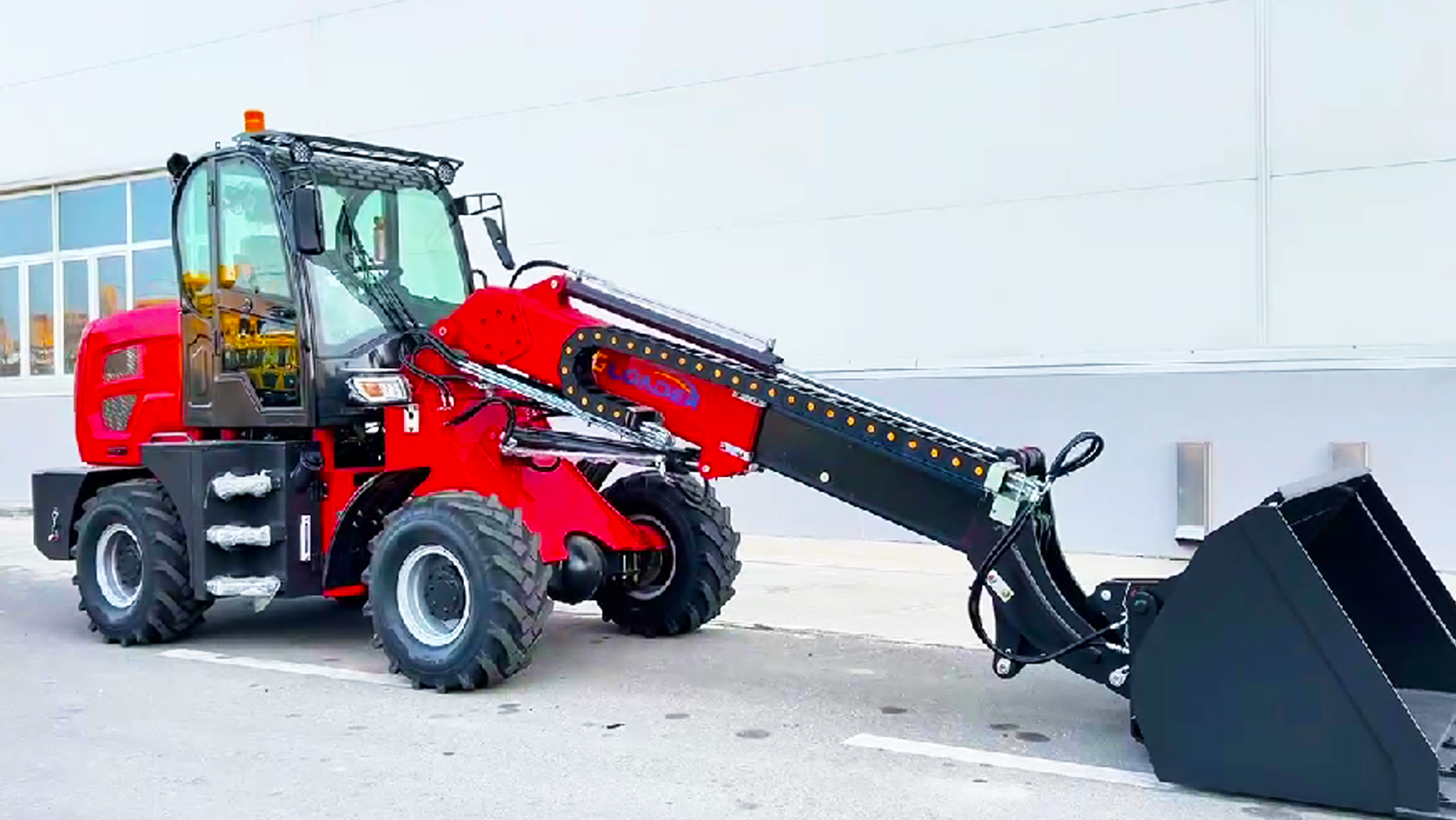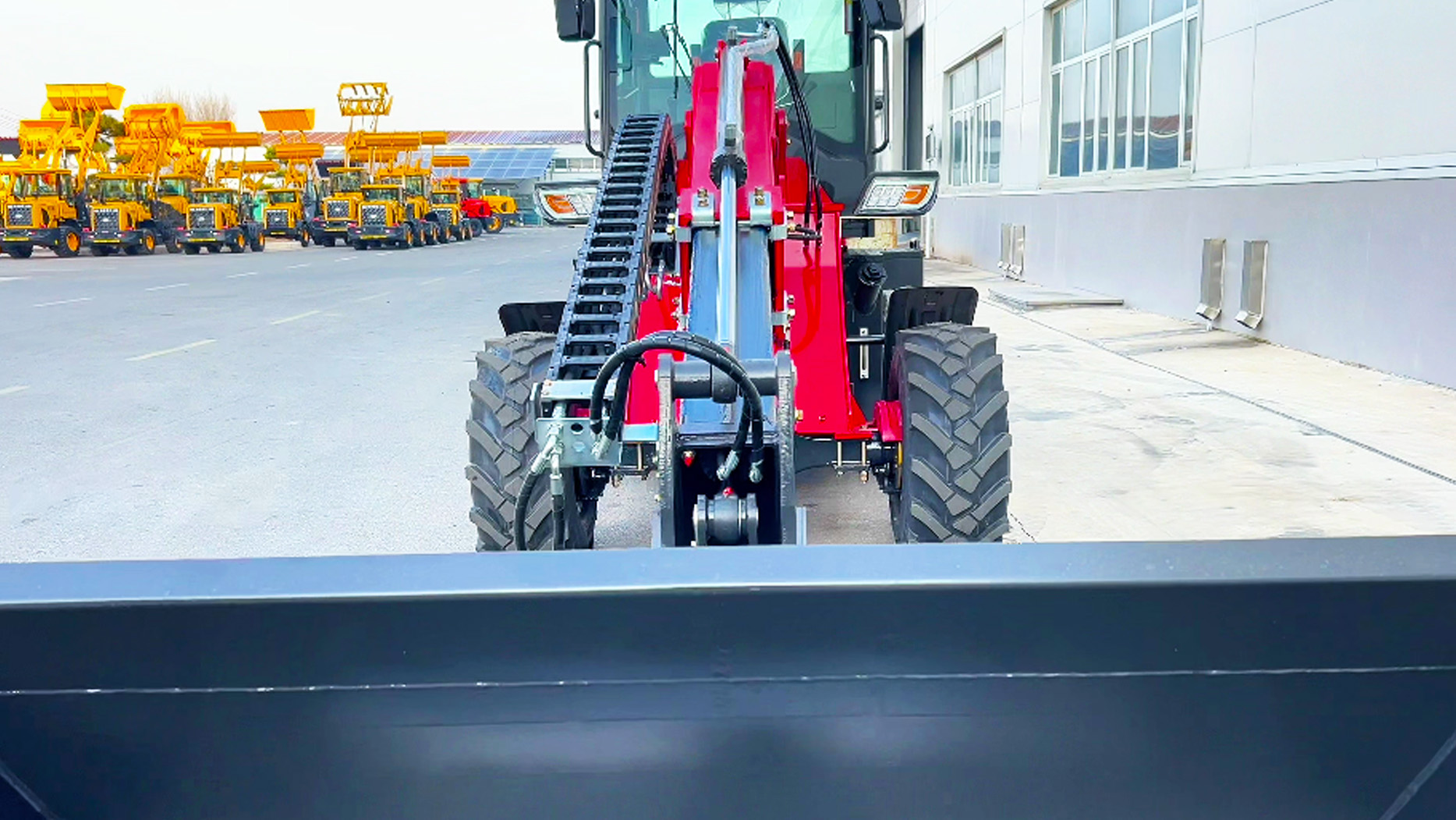Introduction
A wheel loader is heavy-duty machinery used to excavate, lift, and transport materials such as soil, gravel, rocks, and debris. These machines are common in construction, mining, agriculture, and waste management operations. Operating a wheel loader requires proper training and a strong emphasis on safety. This article will provide a comprehensive guide on how to drive a wheel loader safely and effectively.
II. Machine Familiarization
Overview of Wheel Loader Components: A wheel loader consists of several key components, including an engine, transmission, hydraulic system, tires or tracks, a cab, and a bucket. The engine provides power to the machine, while the transmission system drives it. The hydraulic system controls the movement of the bucket and other attachments.
Identification and Function of all Cab Controls: The operator's cab houses various controls that the operator must be familiar with. These include the steering wheel for steering, joysticks or levers for controlling bucket movement, pedals for acceleration and braking, switches for various functions, and gauges for monitoring machine performance.
Wheel Loader Safety Features: Wheel loaders are equipped with several safety features to protect the operator. These may include a rollover protection structure (ROPS) to prevent injury in case of a rollover, a falling object protective structure (FOPS) to protect against falling debris, seat belts to secure the operator, and other safety devices.
Types of Wheel Loaders: Wheel loaders come in different types, with the most common being wheeled loaders and tracked loaders. Wheeled loaders are more maneuverable on hard surfaces, while tracked loaders offer better traction on uneven terrain.
III. Pre-Start Checks
Inspecting the Machine for Damage or Leaks: Before operating a wheel loader, it is essential to conduct a thorough inspection for any signs of damage, such as cracks, bends, or fluid leaks.
Checking Fluid Levels: Check the engine oil, hydraulic fluid, coolant, and fuel levels to ensure they are within the recommended ranges. Replenish fluids as necessary.
Inspecting Tires and Adjusting Pressure: Inspect the tires for any cuts, bulges, or other damage. Check the tire pressure and adjust it to the recommended specifications.
Checking the Operation of Controls and Indicators: Ensure that all controls, including the steering wheel, joysticks/levers, pedals, and switches, are functioning correctly. Verify that all gauges and meters are working as intended.
Ensuring the Work Area is Clear and Safe: Before starting the machine, ensure that the work area is free of obstacles, personnel, and other hazards.
IV. Starting and Stopping Procedures
Correct Procedure for Starting the Engine: Follow the correct starting procedure as outlined in the operator's manual. This typically involves ensuring that the parking brake is engaged, the transmission is in neutral, and the ignition key is in the proper position.
Warming Up the Engine and Hydraulic System: Allow the engine and hydraulic system to warm up for a few minutes before operating the machine. This allows the fluids to reach the proper operating temperature.
Procedure for Safely Stopping the Machine: To stop the wheel loader safely, gradually reduce speed, shift the transmission into neutral, engage the parking brake, and turn off the engine. Using the Parking Brake: The parking brake should be applied whenever the machine is parked to prevent accidental movement.
V. Basic Controls and Steering
Understanding Articulated Steering: Wheel loaders use articulated steering, where the machine pivots at its midpoint to turn. This requires the operator to anticipate turns and allow for ample clearance.
Using the Accelerator and Brake: The accelerator pedal controls the engine speed, while the brake pedal stops the machine. Use both pedals smoothly and in coordination.
Selecting Gears and Using the Transmission: Wheel loaders have multiple gears for different tasks and terrain conditions. Select the appropriate gear for the task at hand and shift gears smoothly.
Coordinating Steering and Speed Control: Coordinating steering and speed control is crucial for smooth and efficient operation. Avoid making sharp turns or sudden changes in speed.
Practice Exercises: Practice maneuvering the wheel loader in an open area to become familiar with the controls and steering. Start with basic movements and gradually progress to more complex maneuvers.
VI. Bucket Operation
Using the Joystick or Levers: The joystick or levers in the cab control the movement of the bucket. These controls allow the operator to raise, lower, tilt, and dump the bucket.
Techniques for Efficiently Loading Material: Efficiently loading material requires precise coordination of steering, bucket movement, and throttle control. Common techniques include digging into the material pile, pushing the material into the bucket, and heaping the material to maximize the load.
Transporting Material Safely and Stably: When transporting material, keep the bucket as low as possible to maintain stability and prevent the machine from tipping. Avoid making sudden turns or stops.
Techniques for Precisely Dumping Material: Precisely dumping material involves carefully controlling the height and angle of the bucket to place the material where desired. This may require fine maneuvering and adjustments.
Avoiding Overloading and Maintaining Stability: Overloading the bucket can compromise the machine's stability and lead to accidents. Always adhere to the manufacturer's recommended load capacity and distribute the load evenly in the bucket.
VII. Safety Practices
Using Personal Protective Equipment (PPE): PPE such as hard hats, safety glasses, gloves, and safety boots is essential for protecting operators from potential hazards.
Following worksite safety rules and regulations: Operators must comply with all relevant worksite safety rules and regulations to prevent accidents and injuries.
Communicating with ground personnel and spotters: Effective communication with ground personnel and spotters is crucial for coordinating machine movements and ensuring safety on the job site.
Avoiding hazards: Operators should be aware of potential hazards such as overhead power lines, underground utilities, drop-offs, and other obstacles.
Safe operating procedures in various terrain conditions: Adjust operating techniques to suit different terrain conditions, such as wet, dry, uneven, or sloping surfaces.
VIII. Maintenance and Care
Daily maintenance procedures: Daily maintenance tasks include cleaning the machine, lubricating moving parts, and inspecting for any damage or wear.
Regular maintenance schedules to prevent breakdowns: Adhere to regular maintenance schedules, including oil changes, filter replacements, and inspections, to keep the machine in good working order and prevent breakdowns.
Troubleshooting common issues: Familiarize yourself with common problems that may occur with wheel loaders and how to troubleshoot them. This can help minimize downtime and maintain productivity.
IX. Tips for Efficient Operation
Optimizing fuel efficiency: To optimize fuel efficiency, avoid excessive idling, operate at appropriate engine speeds, and keep the machine well-maintained.
Minimizing machine wear and tear: Minimize machine wear and tear by operating it smoothly, avoiding abrupt maneuvers, and performing regular maintenance.
Maximizing productivity: To maximize productivity, plan operations efficiently, use proper loading and dumping techniques, and keep the work area organized.
X. Conclusion
Operating a wheel loader safely and effectively requires a thorough understanding of the machine, its controls, and proper operating procedures. Continuous practice, attention to safety, and prioritizing maintenance are essential for becoming a skilled and responsible operator.
Post time:Apr.07.2025



